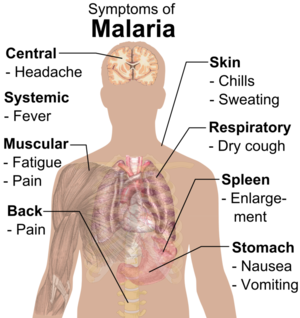The Skin Microbiome and Malaria
Introduction
By Aldis Petriceks
Double brackets: [[
Closed double brackets: ]]
Bold
Italic
Subscript: H2O
Superscript: Fe3+
Malaria is a deadly disease caused by the protozoan Plasmodium, and spread through mosquito bites. [1] The most common ailments are fever, chills, and flu-like symptoms which typically begin within a month of infection [2]. Other symptoms include headache, vomiting, jaundice, shivering, and joint pain. The most notable sign of a malaria infection is paroxysm – which includes cycles of cold and shivering followed by fever and sweating. While immediate treatment can typically facilitate a full recovery, those without access to medical care can fall fatal to the disease within days. There are currently 3.4 billion people living in high-risk areas, which led to 500,000 deaths from malaria in 2013 alone (CDC). The majority of these deaths occur in underdeveloped tropical and sub-tropical countries, which in turn incur the bulk of the $12 billion USD yearly cost associated with fighting the disease.
[3]
A citation code consists of a hyperlinked reference within "ref" begin and end codes.
Section 1
Include some current research, with at least one figure showing data.
Every point of information REQUIRES CITATION using the citation tool shown above.
Section 2
Include some current research, with at least one figure showing data.
Mosquito-Attracting Skin Bacteria

Section 4
Conclusion
References
Authored for BIOL 238 Microbiology, taught by Joan Slonczewski, 2016, Kenyon College.

